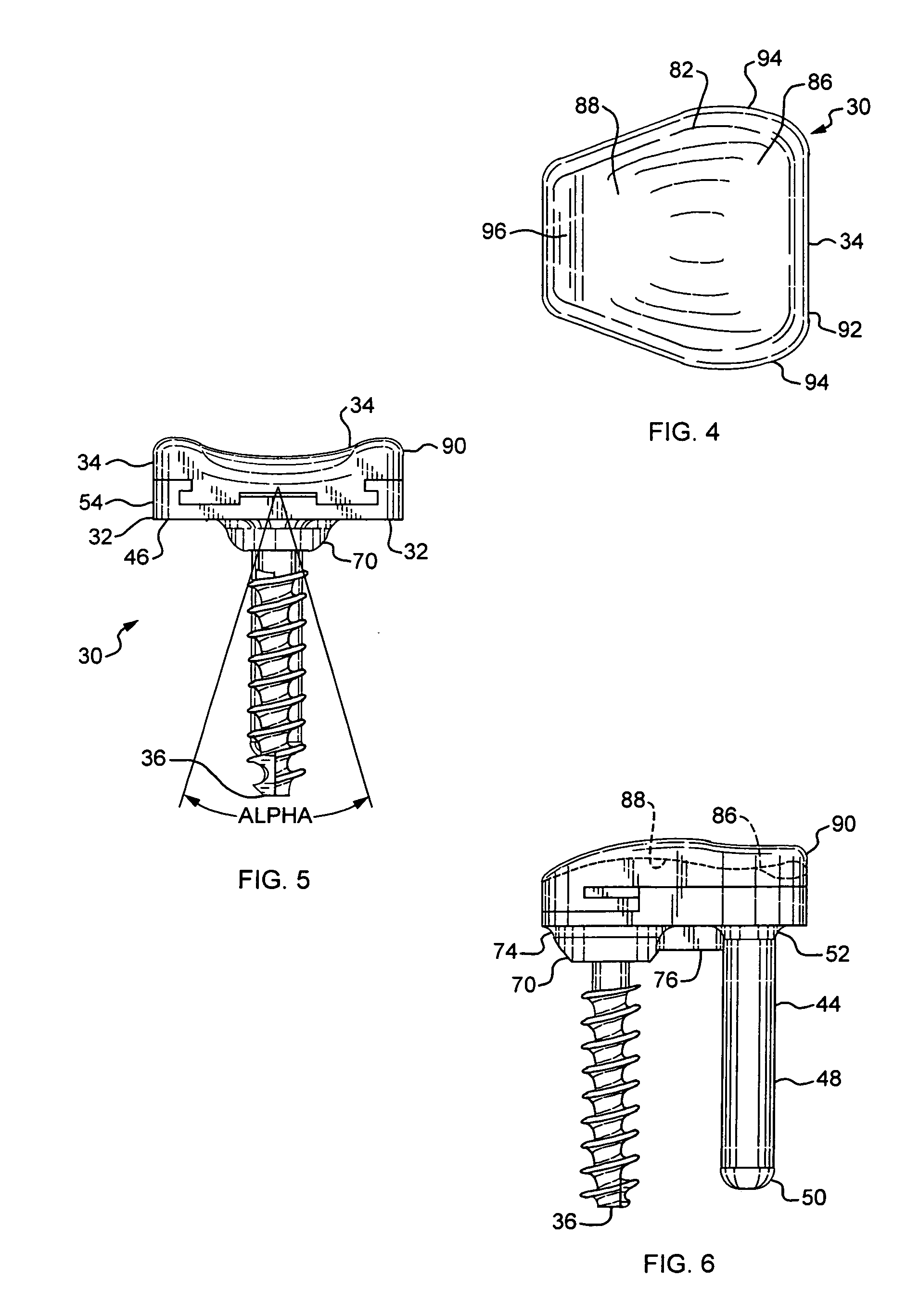Sigmoid notch implant
a sigmoid notch and implant technology, applied in the field of joint prosthesis, can solve the problems of rotational instability, subsequent weakness in grip and pinch, and potential loss of forearm rotation
- Summary
- Abstract
- Description
- Claims
- Application Information
AI Technical Summary
Benefits of technology
Problems solved by technology
Method used
Image
Examples
Embodiment Construction
[0036]An embodiment of the sigmoid notch implant 30 generally includes radius portion 32, saddle 34 and bone screw 36. Referring to FIGS. 18 and 19 the sigmoid notch implant 30 is generally utilized along with an ulnar head implant 38. A typical ulnar head implant 38 includes a head portion 40 and a stem portion 42. One exemplary ulnar head prosthesis is disclosed in U.S. Pat. No. 6,302,915. The contents of that U.S. patent are incorporated herein by reference.
[0037]Referring to FIGS. 1–6 and 13–18, radius portion 32 generally includes stem 44 and saddle plate 46. Stem 44 may extend outwardly from saddle plate 46 at a substantially right angle.
[0038]Stem 44 includes cylindrical portion 48 and rounded end 50. Stem 44 joins saddle plate 46 at fillet 52. Stem 44 may also have a tapered shape or include ridges or surface texturing thereon.
[0039]Referring to FIGS. 13–18 saddle plate 46 is roughly trapezoidally shaped and may be integrally formed with stem 44. Saddle plate 46 presents sad...
PUM
| Property | Measurement | Unit |
|---|---|---|
| shape | aaaaa | aaaaa |
| radius | aaaaa | aaaaa |
| perimeter | aaaaa | aaaaa |
Abstract
Description
Claims
Application Information
 Login to View More
Login to View More - R&D
- Intellectual Property
- Life Sciences
- Materials
- Tech Scout
- Unparalleled Data Quality
- Higher Quality Content
- 60% Fewer Hallucinations
Browse by: Latest US Patents, China's latest patents, Technical Efficacy Thesaurus, Application Domain, Technology Topic, Popular Technical Reports.
© 2025 PatSnap. All rights reserved.Legal|Privacy policy|Modern Slavery Act Transparency Statement|Sitemap|About US| Contact US: help@patsnap.com



